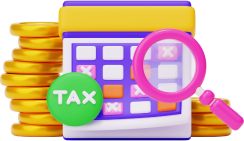Taxes in Australia

Lais Cattassini
Lais is a Brazilian journalist and copywriter with over 17 years of experience, writing about things she knows really well (travelling, cinema, social media trends) and things she loves learning about.

Oleksandra Dosii
Oleksandra is a dedicated marketer with a passion for growing HR-tech products. She believes content marketing is about delivering high-quality content that provides value—not just generating leads. Since 2016, Oleksandra has been involved in tech talent relocation.

Start Advertising

Australia's tax system is a progressive structure, where the federal government primarily collects taxes through the Australian Taxation Office (ATO). Tax rates for individuals vary depending on income brackets. Residents are taxed on their worldwide income, while non-residents are taxed only on their Australian-sourced income. In addition to income tax, residents pay a Medicare Levy of 2% on their taxable income. This levy funds Australia's public healthcare system.
The corporate tax rate in Australia is generally 30% for large companies, while small businesses (with turnover below a certain threshold) enjoy a reduced rate of 25%.
Australia uses the Pay-As-You-Go (PAYG) System to collect annual income tax. This applies to both employees and businesses. Employers withhold income tax from wages and salaries under PAYG withholding. Businesses and self-employed individuals make PAYG instalments to the ATO based on their estimated annual income.
Every individual and business is required to lodge an annual tax return with the ATO, which summarises their income, deductions, and tax offsets. Based on this return, the ATO determines whether the taxpayer owes more tax or is entitled to a tax refund.
What is the income tax in Australia?
In Australia, income tax is the primary form of taxation for both individuals and businesses. The system is designed to be progressive, meaning that as income increases, so do the tax rates.
Australia's income tax system is structured into tax brackets, with the tax rate increasing as income increases:
| Taxable income | Tax rate |
| Up to A$18,200 | 0% |
| A$18,201 to A$45,000 | 16 cents for each A$1 over A$18,200 |
| A$45,001 to A$135,000 | A$4,288 plus 30 cents for each A$1 over A$45,000 |
| A$135,001 to A$190,000 | A$31,288 plus 37 cents for each $1 over A$135,000 |
| A$190,001 and over | A$51,638 plus 45 cents for each A$1 over A$190,000 |
Social welfare contributions
In Australia, the social welfare system is funded primarily through general taxation, rather than specific Social Security contributions as seen in some other countries like the United States.
The Australian system includes a range of welfare payments, pensions, and services, but there is no separate payroll tax dedicated exclusively to social security. Instead, the primary contribution to the social welfare system is the Medicare Levy, and the government funds various programs through revenue collected from income taxes and other taxes.
The Medicare Levy, set at 2%, is the main contribution specifically tied to a public service. It funds the national healthcare system (Medicare), which provides access to public hospital services, medical treatments, and other health-related benefits.
The Australian Superannuation system is the primary way in which retirement savings are funded. It is a form of compulsory savings that helps Australians build retirement income and reduces dependence on government pensions. Employers are required to contribute a minimum percentage of an employee’s earnings to a superannuation fund.
Superannuation contributions are taxed at a concessional rate of 15% within the fund, and the funds are generally accessible upon retirement.
Online tax calculator for Australian taxes
The Australian government provides a tool to calculate how much you will potentially pay in taxes for the upcoming year.
You can calculate your Australian net income here.
Annual tax returns in Australia
Individuals and businesses are required to lodge tax returns to report their income, deductions, and tax obligations to the Australian Taxation Office.
The Australian financial year runs from July 1 to June 30 of the following year. Individuals and businesses need to file their tax return after the end of the financial year, by October 31.
Australian residents who earn above the tax-free threshold (A$18,200 per year) are required to lodge a tax return. Even those earning below this threshold may need to lodge one to claim refunds on tax withheld by their employer.
The MyGov portal is the most popular and convenient way for individuals to lodge tax returns online. It connects directly to the ATO’s system and pre-fills much of the required information, including income from employers, banks, and government agencies.
You can also use a registered tax agent or accountant to prepare and lodge your tax returns. Using a tax agent can help ensure that all deductions are claimed properly, and the agent can extend the deadline for lodging. However, tax agents must be registered with the Tax Practitioners Board.
Though less common today, individuals can still lodge a paper tax return by completing the relevant forms and mailing them to the ATO. This method takes longer to process than online submissions.
After lodging a tax return, the ATO assesses whether you have paid enough tax during the year through withholding or PAYG instalments. If too much tax was withheld or paid, you will receive a refund, which is usually processed within 2-3 weeks. If insufficient tax was withheld or paid, you will need to pay the difference by the due date.
How to pay less taxes
It is possible to reduce the amount of taxes you have to pay through deductions and allowances.
Work-related deductions
Employees can claim deductions for expenses incurred directly in earning their income.
If you use your personal car for work purposes, you can claim deductions for vehicle expenses (but not for commuting to and from work). You can also claim the cost of compulsory uniforms, protective clothing, and any expenses incurred in laundering these items, provided they are directly related to your job.
If you work from home, you can claim deductions for home office expenses, including internet and phone bills and electricity costs.
Investment deductions
If you take out a loan to purchase an investment property, shares, or other income-generating assets, you can claim a deduction for the interest paid on the loan.
Property investors can also claim a wide range of deductions related to their rental property.
Superannuation contributions
Making voluntary contributions to your superannuation can help reduce your taxable income while boosting your retirement savings.
By arranging with your employer to make salary sacrifice contributions to super, you can reduce your taxable salary, as these contributions are taxed at a concessional rate of 15% within the super fund, which is lower than most income tax rates.
You can also make personal super contributions and then claim a tax deduction for those contributions.
Claim charitable donations
Donations of A$2 or more to registered charities are tax-deductible in Australia. To claim these deductions you must ensure the charity is registered with the ATO as a deductible gift recipient (DGR).
Tax offsets
Tax offsets directly reduce the amount of tax payable (unlike deductions, which reduce taxable income).
Low-Income and Middle-Income Tax Offsets are available for individuals with taxable incomes up to A$66,667, providing up to A$700 in tax relief.
The low-and-middle-income tax offset (LMITO) provides additional relief for those earning between A$48,000 and A$90,000, with a maximum offset of A$1,500.
Private health insurance rebate
Taking out private health insurance may make you eligible for the private health insurance rebate, depending on your income level. This rebate is either received as a reduction in premiums or claimed as a tax offset.
Talk to a tax advisor
It can be beneficial to consult a tax advisor or accountant to ensure you pay due taxes correctly and collect the benefits, allowances, and deductions you are entitled to. For expats, services like these can be even more beneficial, as they help foreigners overcome language barriers and the complicated tax regulations of a new country.
Other taxes in Australia
Apart from income tax, Australian residents are subject to various other taxes depending on their activities, consumption, and ownership of assets. These taxes contribute to government revenue and help fund public services at both the federal and state levels.
Goods and services tax (GST)
The goods and services tax (GST) is a broad-based consumption tax applied to most goods and services sold or consumed in Australia. The GST is set at 10%.
Capital gains tax (CGT)
Capital Gains tax is applied to the profit (capital gain) made from the sale of certain assets, such as real estate, shares, or other investments.
Payroll tax
Payroll tax is a state tax that businesses must pay on the wages they pay to employees once they exceed a certain threshold.
The rate and threshold vary by state, ranging from 4% to 6.85%, depending on the jurisdiction.
Land tax
Land tax is a state-based tax on the ownership of land, typically applied to investment properties or land that isn’t your primary residence.
The rate and thresholds vary by state, but it is generally a percentage of the land’s value, and higher rates may apply to foreigners or companies.
Environmental taxes and levies
Certain environmental taxes or levies are imposed to encourage sustainable practices or fund environmental initiatives.
Tax treaties with Australia
Australia has tax treaties with other countries to avoid the double taxation of foreigners living in Australia and to encourage economic relations between the nations.
You can see here the complete list of tax income agreements currently in effect in Australia.
Need to consult a tax advisor or an accountant?

Fill out this form

Shoot us an email with your inquiry at [email protected].




















